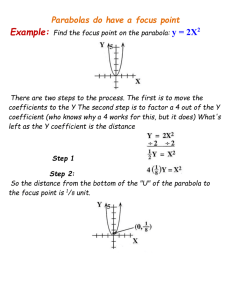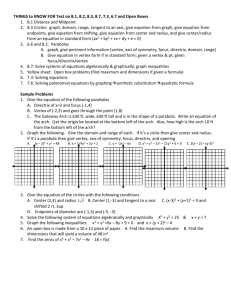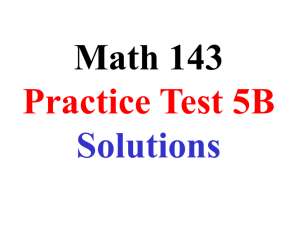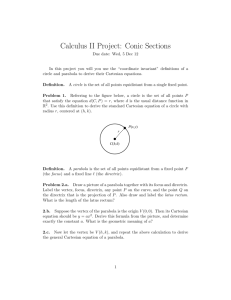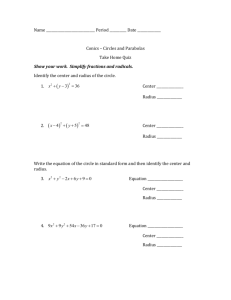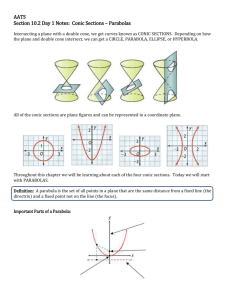9.1 Parabola FOCUS (h, k + p) VERTEX (h, k)
advertisement
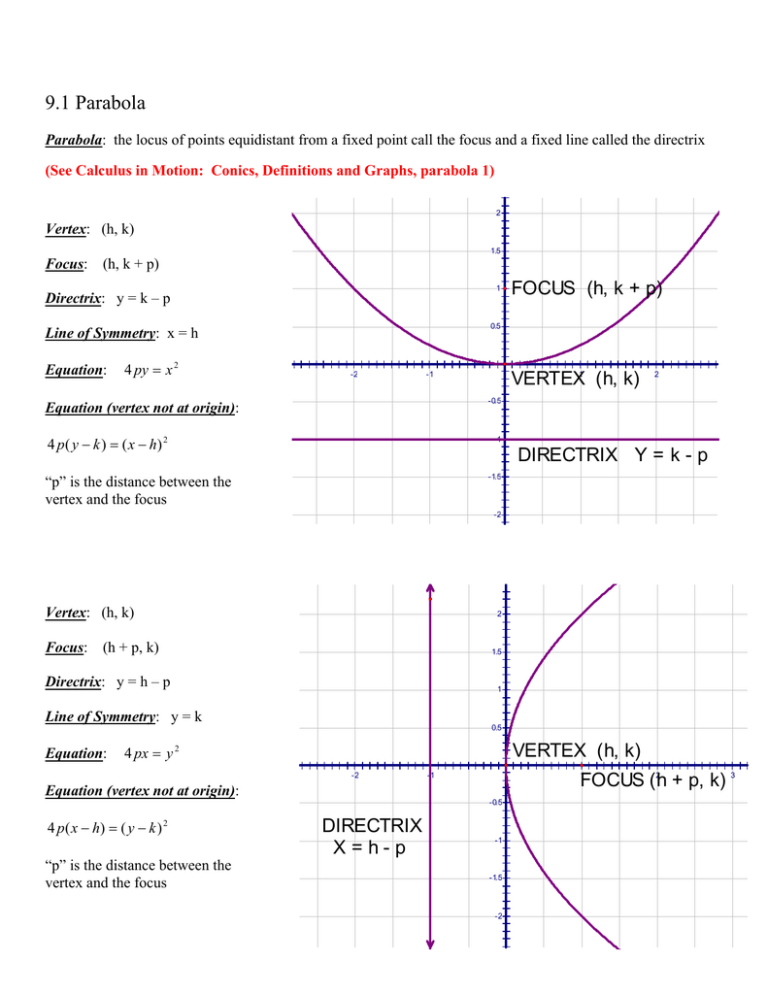
9.1 Parabola Parabola: the locus of points equidistant from a fixed point call the focus and a fixed line called the directrix (See Calculus in Motion: Conics, Definitions and Graphs, parabola 1) 2 Vertex: (h, k) 1.5 Focus: (h, k + p) 1 Directrix: y = k – p 0.5 Line of Symmetry: x = h Equation: 4 py = x 2 FOCUS (h, k + p) -2 -1 VERTEX1 (h, k) 2 -0.5 Equation (vertex not at origin): 4 p ( y − k ) = ( x − h) 2 -1 DIRECTRIX Y = k - p -1.5 “p” is the distance between the vertex and the focus -2 Vertex: (h, k) 2 Focus: (h + p, k) 1.5 Directrix: y = h – p 1 Line of Symmetry: y = k 0.5 Equation: VERTEX (h, k) 4 px = y 2 -2 -1 1 2 FOCUS (h + p, k) 3 Equation (vertex not at origin): -0.5 4 p ( x − h) = ( y − k ) 2 “p” is the distance between the vertex and the focus DIRECTRIX X=h-p -1 -1.5 -2 Homework Examples: Given the equation, determine the vertex, focus, directrix and sketch the graph. 1. y = −4x 2 2. Homework: Day 1, p. 637 (1-6 vocabulary, 1-6, 7-25 odd) y 2 − 4 y − 4x = 0 Homework Examples: Based on the given information, determine the standard form of the equation of the parabola and sketch the graph. ⎛5 ⎞ Focus: ⎜ ,0 ⎟ ⎝2 ⎠ Vertex: (0,0) Directrix: y = 3 Vertex: (0,0) Vertex: (3, -3) 9⎞ ⎛ Focus: ⎜ 3,− ⎟ 4⎠ ⎝ http://www.ies.co.jp/math/java/conics/focus/focus.html Vertex: (-2, 1) Directrix: x = 1 See this applet for a demonstration of how beams reflect off of a parabola and converge at one point, the focus. This phenomenon occurs for any parabola. Homework: Day 2, p. 637 (25-47 odd, 53,59)


